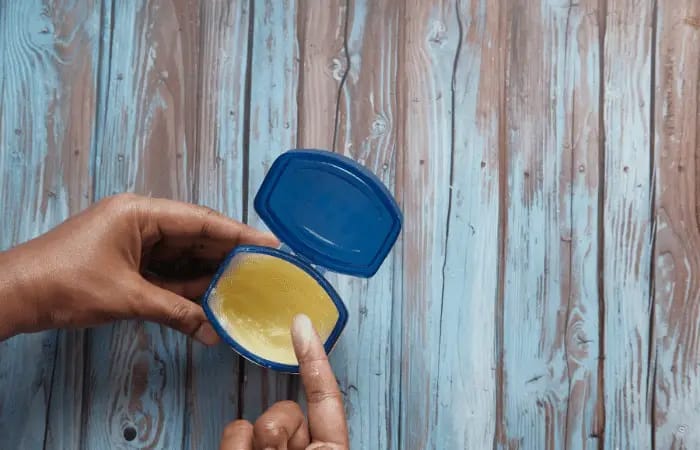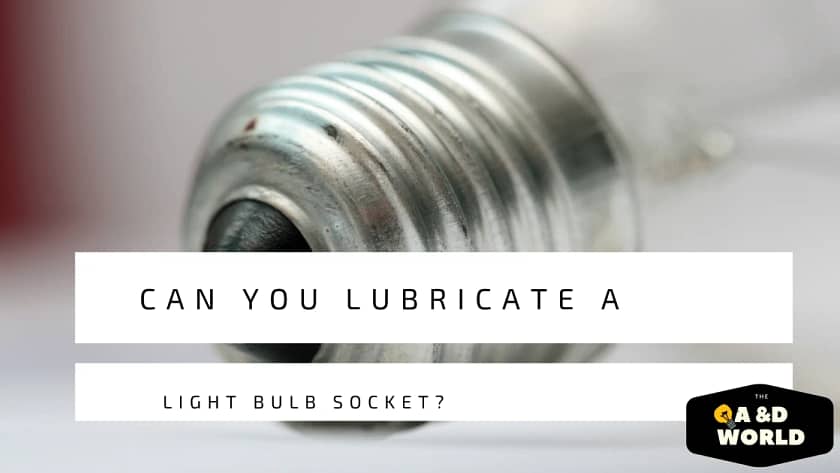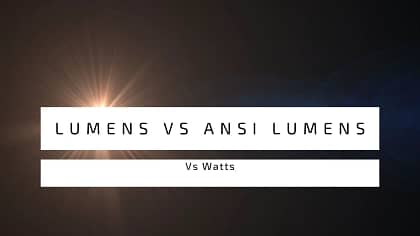Writing about light socket lubricant seems strange to me. But it is a real problem. Many people, myself included, have had trouble unscrewing a light bulb from its socket. It’s either too tight or there’s a grinding noise.
According to eHow, when a light bulb isn’t screwed in properly, air can get in. This can destroy the integrity of the bulb and shorten its life. Light bulb lubricant makes it easier to screw and unscrew light bulb sockets.
With a quick application of petroleum jelly, you can insert and remove your light bulbs in seconds.
Not only does it solve the annoying problem of bulbs being difficult to screw in, but it also helps extend the life of your bulbs. The lubricant also reduces friction and ensures that air can not get into the bulbs. This can help your light bulbs burn longer.
How To Use Petroleum Jelly As A Light Bulb Lube?

In addition to its amazing skin benefits, petroleum jelly also serves as an affordable lubricant for light bulb sockets. However, before applying this jelly to your light bulb, clean the bulb’s sleeve and contact cap with an alcohol swab.
Then, apply a generous amount of petroleum jelly to the bulb’s sleeve only. Remove the excess with a clean cloth. Screw the bulb into the socket of the light fixture. You must not get any of the petroleum jellies on the contact cap because petroleum jelly acts as an insulator and prevents the bulb from working.
Another disadvantage of using petroleum jelly is that it can attract dust, making the bulb stick to the socket even more.
Clean Before Screwing The Bulb
Some people don’t want to risk applying lube to the base of their lightbulb. This fear is understandable. You can simply wipe the contact cap, sleeve, and socket before screwing the bulb.
Start by turning off the power to the light fixture, preferably via the breaker. However, if you can not reach the breaker (in an apartment, for example), turn off the light switch.
You can also turn off the power via a nearby outlet but do so carefully. After the power is off, wipe down the bulb and socket before plugging it in. Generally, this is enough to prevent a bulb from getting stuck in the socket.
Most sockets are aluminum and have an aluminum oxide coating which is non-corrosive. However, water and moisture may create a bit of corrosion, especially in outdoor fixtures.
Use a soft pad to remove the corrosion, and wipe the socket with a dry cloth before installing a new bulb.
Can You Use WD-40 In A Light Socket?
WD-40 isn’t for everything. While WD-40 is great at removing rust, you should not use it as a light bulb lubricant. The spray can act as penetrating oil and damage your bulb.
WD-40 is also flammable, so why would you want near light bulb heat? It is safer to replace any faulty part or wipe away rust or dust before changing the bulb.
What Can I Use To Clean A Light Bulb Socket?
The original DeoxIT formula provides maximum performance in the most extreme conditions. It is recommended for all metals and dissolves corrosion on contacts, leaving a thin protective layer that improves conductivity, lubricates, and protects against future oxidation and corrosion.
You can also apply DeoxIT with a soft toothbrush so you do not damage the contact.
White Vinegar
A vinegar solution should be sufficient to remove corrosion from the contacts. However, careful not to use a toothbrush with too hard a surface – I would stick to something soft and flexible so as not to scratch the contacts.
Furthermore, it might also be wise to rinse with distilled water afterward and then rinse with isopropyl alcohol to make sure the vinegar solution does not linger in the crevices where it could cause problems later.
To Recap,
A light bulb socket is prone to corrosion after long use. You can simply replace a defective part or try to clean it. However, when you are done wiping off rust or dust, you may be tempted to use a lubricant. There are some disadvantages to using petroleum jelly. So if you do not want to risk it, try using DeoxIT.





